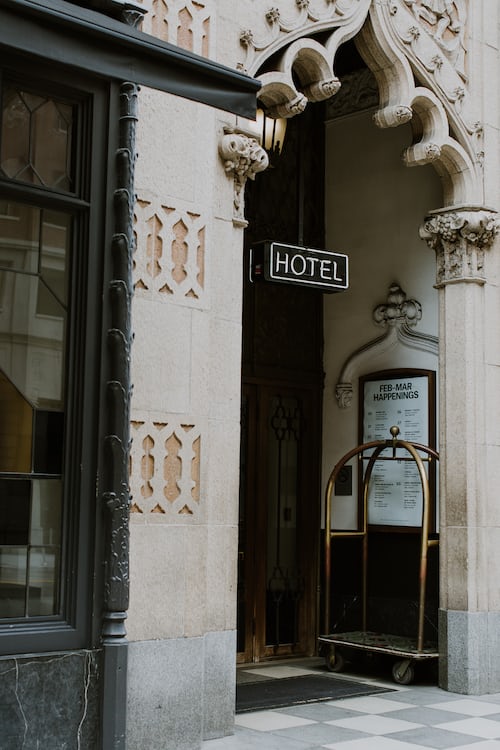Sam Walton, born in 1918 in Kingfisher County, Oklahoma, just about right in the middle of the United States. After the Great Depression hit, his father, Thomas Walton, found a job repossessing farms around Missouri.
Sam would sometimes travel with his father and watch as he tried to leave a little dignity to the farmers who had defaulted on their loans and were about to lose their land. No doubt this is why Sam began to be cautious about money.
Sam discovered at a very young age that he was good at selling things. He spent his high school and college years handing out newspapers and won a competition to sell subscriptions door-to-door. After college, he went to work weekly at Jesse Penney's in Des Moines, earning seventy-five dollars a week.
Then the war broke out. He spent three years in the army and stayed home due to heart problems. After he was discharged, he decided to return to retail, this time as his own boss.
Sam wanted to buy a franchise for a United Department Store in St. Louis, but his new wife Helen refused to live in a town with a population of more than ten thousand. So, they finally chose Newport, Arkansas, population five thousand; Sam bought a Ben Franklin grocery shop with the help of his father-in-law.

Sam opened his first independent discount shop in Rogers, Arkansas, on July 2, 1962. These giant discount shops sold everything from designer clothing to car parts, and they were the trend of the future. He would either ride the tide or be swept away by it. He was so stingy that he had to use as few letters as possible on the shop sign: the new shop was named Wal-Mart. It promised "low prices every day".
By 1969, he had thirty-two shops in four states. The following year, Sam took the company public. The Walton family owned sixty-nine per cent of the shares and Sam was worth about $15 million.
By 1973, Sam had fifty-five shops in five states. By 1976, he owned one hundred and twenty-five shops and had sales of three point four billion dollars.
Wal-Mart was spreading outward in a great circle from the forgotten towns of middle America, with Bentonville at its center; the local hardware shops and drugstores were closing down, saturating the market in the areas Wal-Mart had conquered to the point where there were no other shops to compete; each new Wal-Mart shop was identical and less than a day's drive from the company's headquarters, where the distribution center was located.

The shops are as big as aircraft hangars and windowless; huge car parks are laid out in fields and trees, away from the city center to attract suburban residents. Sophisticated computers kept track of every item that was ordered, shipped and sold.
By 1980, Wal-Mart had two hundred and seventy-six shops and sales of over a billion dollars. Throughout the 1980s, Wal-Mart exploded into every corner of the country and then overseas, and by the mid-1980s Sam was officially the richest man in America, worth $2.8 billion.
The owner became Mr. Sam and became an object of civic personal worship. Wal-Mart's annual convention drew thousands of people to Arkansas, an inspiring event that carried with it a gospel-like enthusiasm. From his modest office in Bentonville, the chairman wrote a monthly letter to his tens of thousands of employees, thanking and exhorting them.
After being diagnosed with leukemia in 1982, he assured them: "I will come to the shop" "maybe not as often" "but I will try hard and I want to see you. You guys know how much I like to visit you and see how you're doing."
The story didn't get out when a Louisiana town tried to get Wal-Mart to leave for fear it would leave Main Street empty. When reports showed that Wal-Mart workers were paid shockingly low, worked part-time without benefits and often relied on public assistance, Mr. Sam would talk about an assistant partner who was paid by the hour and received a $200,000 equity holding plan when he retired, and who claimed he had improved his standard of living by lowering the cost of living.
Under the blue-and-white Wal-Mart baseball cap, the face resembled a docile raptor, with a smile that grew with age. As long as Mr. Sam is alive, Wal-Mart is a great American story from Bentonville.
In 1989, the cancer returned in his bones, forming incurable multiple myomas. Mr. Sam still didn't want to slow down.
At his next annual meeting, he predicted that sales would exceed $100 billion by the year 2000. "Can we, do it?" He shouted to a crowd of nine thousand on a stage at the University of Arkansas. They shouted back, "Yes, we can do it! “He wrote his memoirs, asking himself whether he should have spent more time with his family in his later years or devoted himself to charity; he concluded that if he had it all to do over again, his choices would still be exactly the same.
Marriage left money in the family; Helen and her four children were worth twenty-three billion dollars, and in the end, the six living Waltons would have had a fortune equal to the combined wealth of the bottom thirty per cent of the American population.
By early 1992 Mr. Sam was fading and in March President and Mrs. Bush came to Bentonville and Mr. Sam staggered out of his wheelchair to receive the Presidential Medal of Freedom. In his final days, he was most pleased by a visit from a local branch manager who wanted to talk about sales figures, and in April, having just celebrated his seventy-fourth birthday, Mr. Sam died.